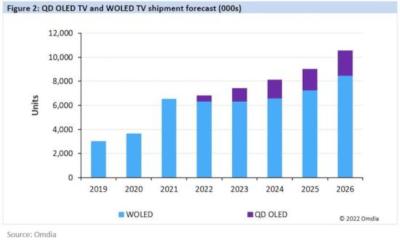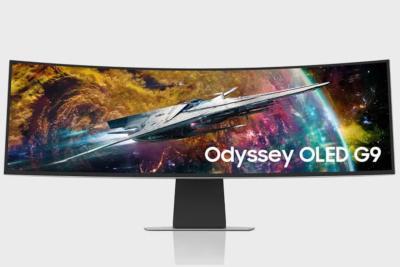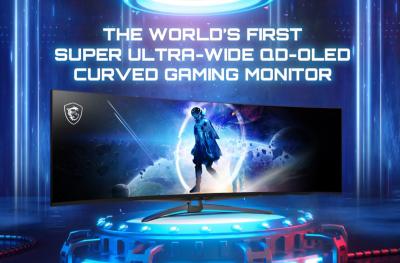OLED displays are made from organic emitter materials - and are gaining in popularity as these next-generation displays offer excellent image quality and novel form factors.
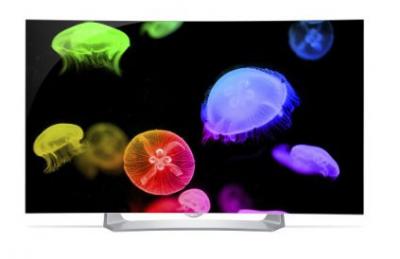
Quantum Dots are tiny particles that have excellent photonic emission properties - and are used widely today in many LCD displays as the QD photoluminescence features enable the conversion of blue LED light to red and green light to create full-color displays that are better than white-backlit LCDs. QD particles can also be used to create emissive displays, in which the QDs themselves emit the light - read more about QD displays here.
QD-OLED - hybrid OLED and QD displays
QD-OLED displays are hybrid displays that use a combinattion of OLED emitters with QD color conversion layers and/or QD emitters.
Samsung QD-OLED
Samsung's QD Displays use blue OLED emitters and quantum-dots that convert the blue light to red and green light. Samsung's so-called QD-OLED displays have been in development for many years. Samsung Display aims to start QD-OLED panel production towards the end of 2021, and Samsung Electronics will reportedly launch the first QD-OLED products in early 2022.
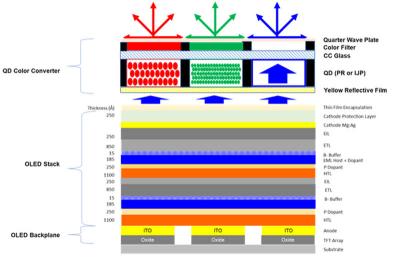
In its first-gen QD-OLED display, Samsung is using a fluorescent blue emitter (will hopefully change to a higher efficiency one in later generations) and ink-jet printed QDs.
TCL H-QLED
In March 2019 it was unveiled that China-based display maker TCL is developing a new hybrid display technology that uses a blue OLED emitter coupled with red and green QD emitters. All three emitter materials will be combined and printed using ink-jet printing technology. TCL calls this technology H-QLED and this could prove to be the technology of choice for TCL's future high-end emissive TV displays. For more information on TCL's H-QLED, click here.
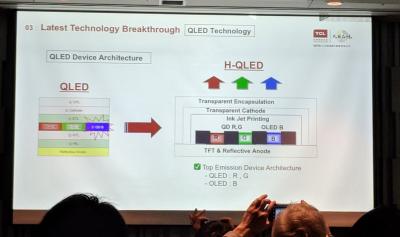
The latest QD OLED news:
Omdia: Samsung to increase QD-OLED TV panel shipments in 2023, LGD to lose OLED TV market share
Omdia posted an interesting market analysis, saying that Samsung Display is looking to increase its OLED TV market share, and will push QD-OLED TV shipments strong in 2023. SDC will increase shipments by 141% in 2023, and will continue to increase production.
Samsung's production increase will be met by an increased number of suppliers - not just Samsung and Sony as in 2022, but other companies will start offering QD-OLED TVs (Philips, TCL and Sharp).
TCL plans to sell its first QD-OLED TV in 2023
Update: TCL says it issued that statement by mistake, and it has no current plans to ship a QD-OLED TV in 2023
TCL announced that it is set to launch its first QD-OLED TV in the coming months. If all goes according to plan, TCL will be the third company (following Samsung and Sony) to offer QD-OLED TVs.
That's the only information we have so far. The TV will likely be offered in 55-inch, 65-inch and/or 77-inch sizes (the available QD-OLED panels today) with a 4K resolution and a refresh rate of 144Hz. That's the current QD-OLED standard.
Samsung to start producing 49-inch and 77-inch QD-OLED panels
Samsung announced that it is set to start producing several new QD-OLED panels and products in 2023. In addition to the current 34-inch, 55-inch and 65-inch panels, it will also offer a 49-inch 240Hz ultra-wide 5120x1440 QD-OLED for gaming monitors, and a 77-inch TV panel.
Samsung will adopt the new 49-inch ultra-wide QD-OLED panel in its upcoming Odyssey OLED G9 monitor. We already knew Samsung has finished developing this panel back in November when MSI unveiled their own QD-OLED monitor project. The 77-inch panel was also unveiled before.
UBI Research: the OLED materials market will grow 8.6% annually to reach $2.75 billion by 2027
UBI Research says that according to its latest study, the OLED emitter market is set to grow from around $1.82 billion in 2022 to $2.75 billion in 2027, with an annual growth rate (CAGR) of 8.6%.
In 2027, UBI expects Samsung's emitter material orders to amount to $680 million - fueled by growth in foldable OLED panels. BOE's emitter material orders will reach $380 million, and LG Display's - $230 million.
MSI shows a 240Hz QD-OLED Monitor slated for early 2023
MSI unveiled an upcoming monitor, a QD-OLED super ultra-wide curved display, that will offer a 240Hz herz. MSI did not disclose anything else - beyond saying that the current name is Project 491C.
This is the first time we publicly hear of a 240Hz QD-OLED display. Samsung currently produces a single monitor QD-OLED panel, a 34-inch curved 175Hz 3440x1440 display.
Kateeva starts to ship 8K QD deposition systems to Samsung Display
According to reports, Kateeva started to ship quantum dots inkjet printing equipment to Samsung Display, for the production of QD-OLED panels. It appears as if Samsung is interested in producing 8K QD-OLEDs, and its current inkjet printing supplier, Semes, is not ready with printers that support 8K QD deposition.
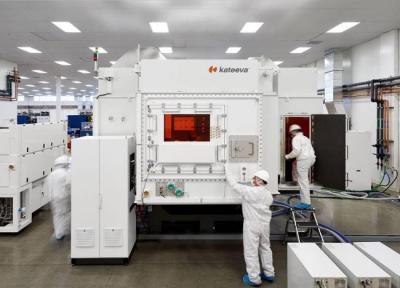
Kateeva announced that it has designed a new system, called the YIELDjet Jarvis, that supports 8.5-Gen substrates and can indeed enable 8K TV deposition. Kateeva says that the Jarvis system has the ability to print using solvent-based RGB inks or nanoparticle inks with its proprietary ink recirculation system to ensure uniform particle distribution.
UBI: Samsung Display to produce QD-OLED monitor panels at its upcoming 8.7-Gen A5 line, targeting Apple as its main customer
According to UBI Research, Samsung Display has decided to produce QD-OLED panels at its upcoming 8.7-Gen A5 production line. The company IT display strategy will be to produce QD-OLED panels for monitor application (27-inch displays, at first) and tandem RGB panels for smaller IT displays (tablets, laptops).
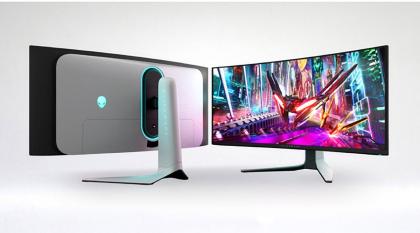
A 34-inch QD-OLED monitor (Dell Alienware)
Samsung is looking for design wins with Apple for both its display architectures - the larger QD-OLED panels for Apple's monitors and the smaller sized panels for its tablets.
DSCC: large-area OLED equipment sales to drop to zero in 2023, but resume in 2024 mostly for CSoT's inkjet printing panels
DSCC says that spending on equipment for the production of large area OLED panels (used in TVs and monitors) have decreased from $3 billion in 2019 to $2.05 billion in 2020, $1.47 billion in 2021 and will drop further to $1.42 billion in 2022.
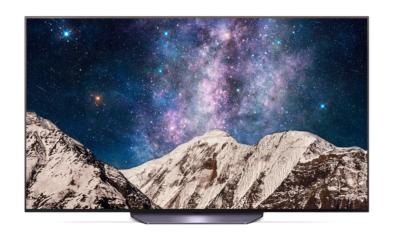
DSCC estimates that in 2023, the spending on such equipment will be zero. But OLED producers will resume buying large OLED equipment in 2024. Spending in 2024 will amount $2.01 billion, and in 2025 - $1.51 billion.
Samsung to increase its QD-OLED production capacity by year's end, will introduce 77-inch and 49-inch panels
Samsung Display says that it managed to increase its QD-OLED production yields to around 85% (up from 75% in April). The company plans to introduce new technologies and processes that will enable it to increase its production capacity from 30,000 monthly substrates to almost 40,000 at the same production line.
Samsung Display will so increase its QD-OLED production capacity by 30%. The main step to achieve this is the reduction of TAKT time (the time it takes to produce one panel).
OLED TVs take first place in Value Electronics' 2022 TV shootout
Esteemed US-based A/V retailer Value Electronics conducted its latest annual TV shootout, with very interesting results. It is not a big surprise, but OLED TV won the first places in both the 4K and 8K shootout.
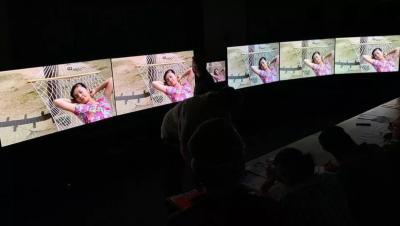
In the 4K category, VE tested five TVs, out of which 3 were OLED TVs: The LG G2 OLED TV, Samsung S95B QD-OLED, Samsung QN95B (QD miniLED), Sony A95K QD-OLED and Sony's X95K mini-LED. The winner of this year's shootout was Sony's A95K QD-OLED.
Pagination
- Previous page
- Page 3
- Next page
